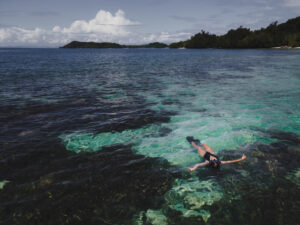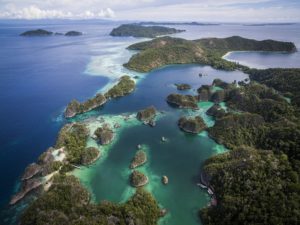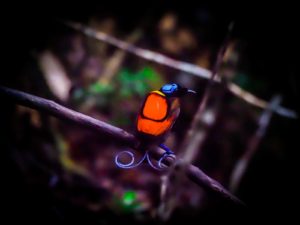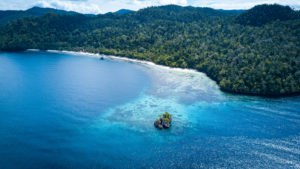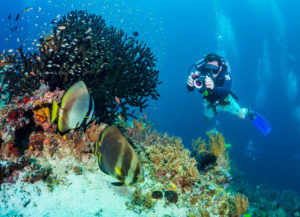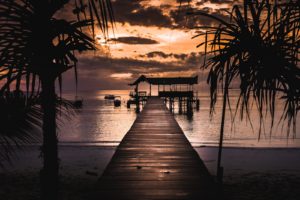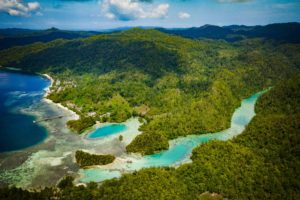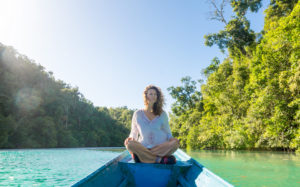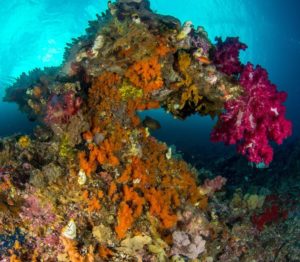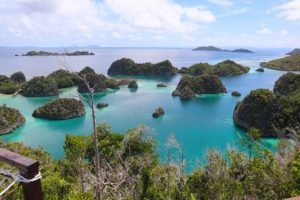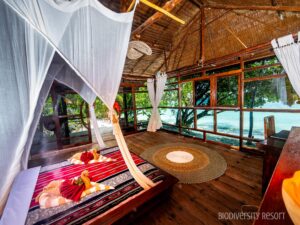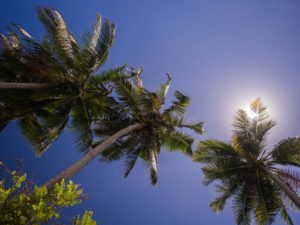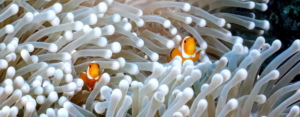So you’re planning your next dive trip, and you and your dive buddy are running through some options. Something close by? An easy one hop flight away? Or is now the time to spend a bit more time and money, taking a trip to one of your bucket list destinations and experience some of the best diving in the world?
Indonesia is on every diver’s radar for the sheer volume and variety it offers. It has many popular dive islands and resorts, although some consider this a reason to avoid it, rather than spend their hard earned dive holidays shoulder to shoulder with the crowds. However, if you look far enough to the east, you just might find what you’re looking for….
You’ve heard Raja Ampat, West Papua, Indonesia is one of the best dive destinations in the world, but is it? And even if it is that good, is it worth the time it’s going to take you to get there? If you talk to those who have visited, the answer is a resounding YES!
In this article Raja Ampat Biodiversity will take you on a guided tour and give you plenty of good reasons – Why dive in Raja Ampat?
For the Biodiversity

Raja Ampat is widely known as the centre of marine biodiversity. Here in the heart of the coral triangle you can find over 550 species of coral (this amounts to almost 75% all species in existence), almost 700 different types of molluscs and a whopping 1711 different types of fish, including 17 different species of dolphin and whale.
Divers come here for the sheer diversity of marine life. Some are here for the big stuff – turtles, mantas, devil rays, white tip, black tip and grey reef sharks – some are here for the macro – pygmy seashores, banded pipe-fish, blue ring octopus, the ghost pipe fish and the nudi-branch – and some are here to geek out at the unbelievable extent of coral species that encrust the reefs. Whatever way you look at it, it’s brimming with life.
Just make sure there’s enough room in your log-book to squeeze it all in!
For the Pristine Coral Reef Systems

Raja Ampat reefs are inhabited by more varieties of coral than anywhere else in the world. Coral coverage is extremely high compared to neighbouring regions, coating up to 70% in the healthiest areas. Coral tables can measure an outstanding 2m in diameter, and the endless undulating reefs stretch as far as the eye can see, covered in branching, finger and elkhorn corals whilst leather corals, mushroom corals and other soft coral colonies hem the reefs.
Covering the sandy bottom of the bays Giant Tridacna clams over a hundred years old sit amongst the sea grass, and on the deeper parts of the reefs enormous gorgonians of pink, purple and lilac cling onto the reef filtering the water as they blow gently in the current.
For the Currents

Not all Raja Ampat dive sites have current, but those that do are famous for it – and for good reason – it brings the big stuff. Sharks, reef and oceanic manta rays, eagle rays, devil rays, barracudas, giant trevelli on the hunt – and even the occasional whale shark.
If you’re not used to diving in current Raja Ampat is the perfect place to learn – and like anything, the more you do it, the easier it becomes. So embrace it, and take the plunge for some exciting diving!
For the underwater photography

Whatever your skill level as an underwater photographer, you’re never going to run out of subject matter on a trip to Raja Ampat. Macro and landscape enthusiasts alike will surface triumphant at the bounty of beauty they’ve captured.
Make sure you ask your dive guide which lens to use for the day’s diving before you get on the boat – it could be big fish action one day at Manta Sandy, or Macro galore in Kabui Bay. Whatever your underwater photographic ambitions, you’ll be able to fulfil them in Raja Ampat.
For the Climate – a wet season that isn’t that wet!

Raja Ampat climate is distinctly tropical. The east monsoon from June to September brings dry weather along with the southerly wind, while the west monsoon from December to March is moisture-laden bringing some rain. Unlike other tropical regions, there isn’t a scheduled afternoon downpour or nightly thunderstorm, and most visitors are pleasantly surprised at how little rain they experience – even in the wet season. The water is an inviting 29-30 degrees Celsius all year round!
For the Spectacular surface intervals
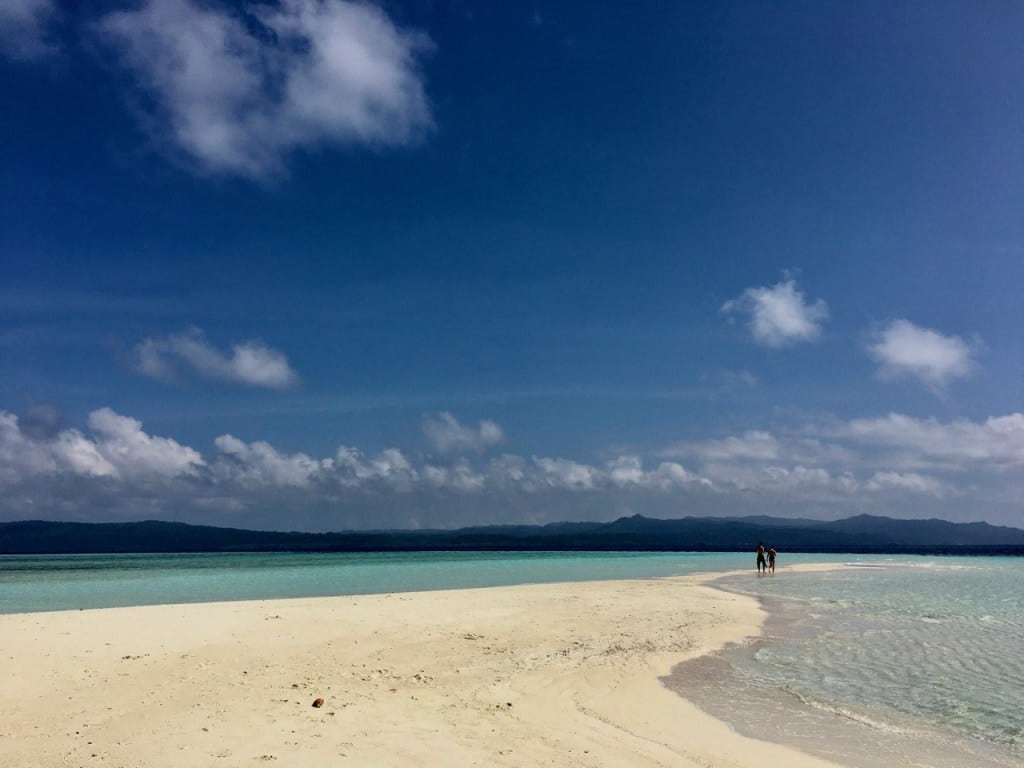
In Raja Ampat you’ll have the pure coral-white sand beaches all to yourself. The enormous karst limestone cliffs tower overhead and verdant green jungles drip from above. Plunge your feet into the warm sands or stretch out on long local rustic jettys on each and every break. Whichever way you turn you’re reminded that you’re in a true paradise.
Because it takes so long to get here

Getting to Raja Ampat is HARD – but this is a good thing!
OK, Blue Magic over Christmas and New Year week may attract some live-aboard attention, but apart from that more often than not, your group will have the whole site to itself. You’ll never feel like you’re just another body on a tourist trail. You’ll have time to relax underwater, and time to engage with the environment properly, free from the pressures of a busy site.
Because you can help protect it’s future
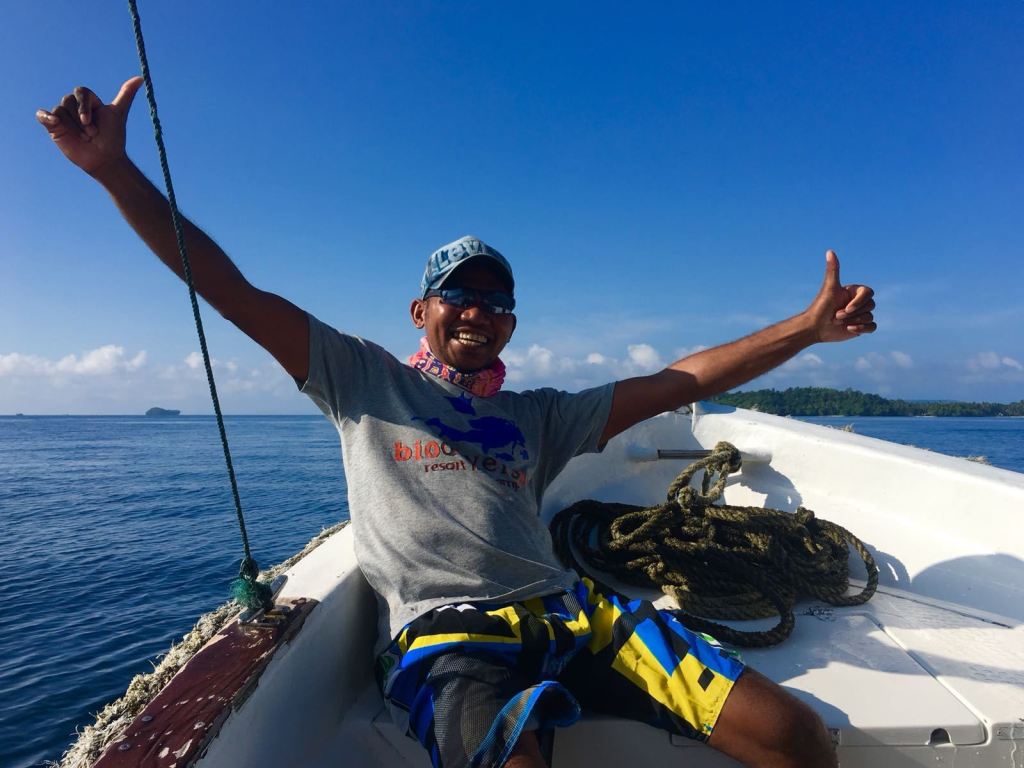
Because of its beauty and the accessibility of its natural resources, Raja Ampat and West Papua has been vulnerable to those who have wanted to exploit it. In 2015 West Papua declared itself as the world’s “first conservation province” in a signed declaration. As a result of this treaty there are lots of great people working very hard to guarantee it’s future. So the region is well protected – and it’s protected for good.
If you decide to visit Raja Ampat and are eco-conscious in how you approach your holiday, you could be one of these people too. This will make you more than just another tourist – it’ll make you an advocate for environmental protection.
It’s easy to make a good ecological choice about your holiday in Raja Ampat. Many accommodation options are locally run (locally known as homestays), and there are plenty of eco resorts who’ll help you make an impact-free vacation a reality.
Here you can find out how we stay eco at Raja Ampat Biodiversity Eco Resort.





